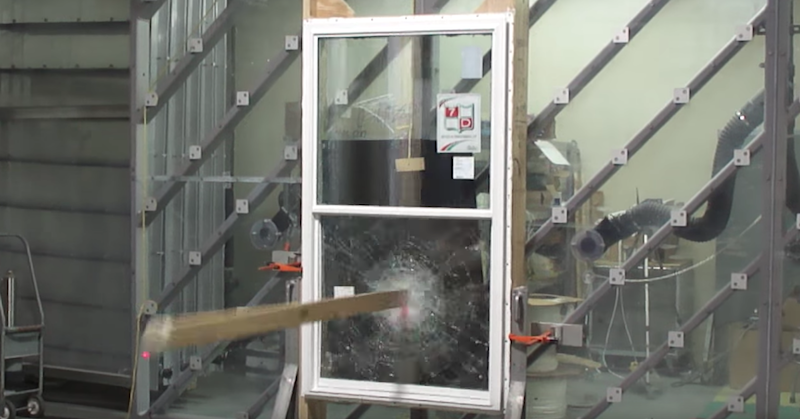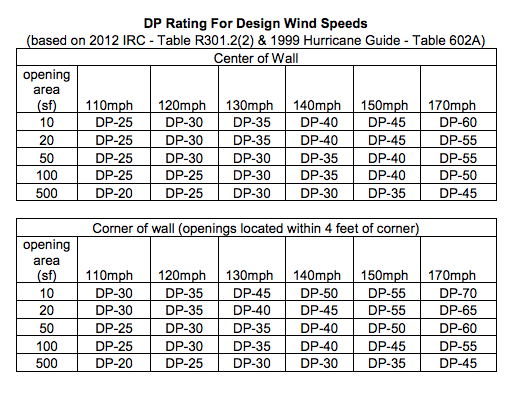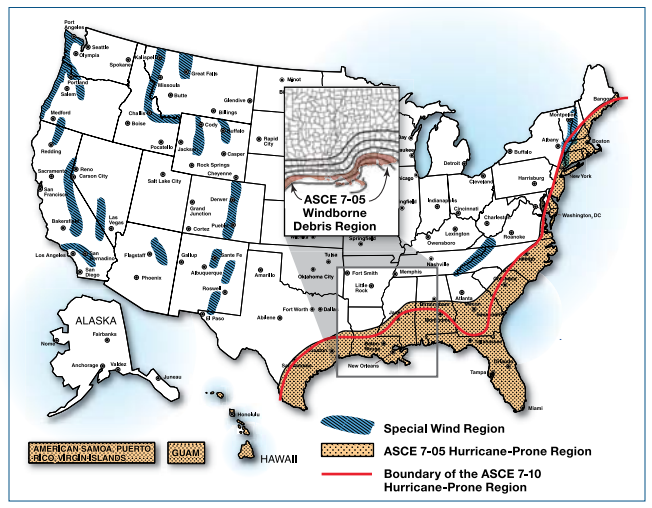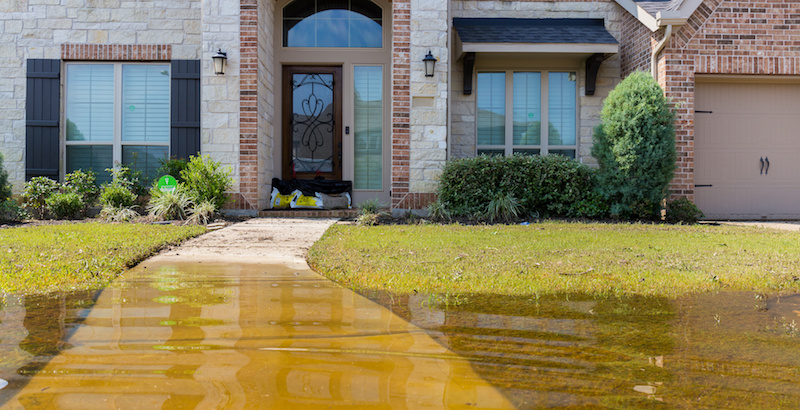
What Are High Impact Windows and How Do They Work?
Some people say installing impact windows is the best way to protect your home from storms and intruders, but are they worth the cost? Learn more about impact windows, how they work, and where they are used in this quick post.
What Are High Impact Windows?
High impact windows are also known as impact-resistant windows, high impact storm windows, and hurricane impact windows.
In order to withstand wind-borne debris or break-ins, high impact windows are made with heavy-duty frames and safety glass which are carefully sealed to keep the glass from breaking away from the frame. Safety glazing is designed to reduce or minimize the likelihood of injury to humans when the glass is broken. Impact windows, in particular, are made with multiple layers of laminated glass and are later tested to make sure they meet stringent codes. The windows are tested against small and large projectiles to make sure they can withstand the impact.

Image Credit: Screen capture from Seven D Impact Window Testing video↗
How Much Can Impact Windows Withstand?
The force of pressure an impact window can withstand depends on its size and placement. After testing, impact windows are given a rating called a design pressure (DP) rating. DP can range anywhere from DP-20 to DP-70. Depending on the size of the window and where it is located DP-20 to DP-70 can withstand wind pressures of 110-170 miles per hour↗. Keep in mind that impact-resistant windows aren’t impact-proof↗ but the priority is to minimize the amount of damage.

DP rating requirements for each design wind speed per the International Residential Code and the Guidelines for Hurricane Resistant Residential Construction
Image Credit: South Central Regional Construction Code Council↗
Where Are High Impact Windows Required
High impact windows are often required in coastal homes, particularly those on the East coast of the United States.
According to safety glass experts, SaftiFirst↗, Texas, New York, Georgia, Hawaii, Alabama, Maine, Massachusetts, New Jersey, North Carolina, Virgina, Louisiana, Mississippi, Rhode Island, and South Carolina have all adopted building codes requiring impact resistant windows in certain regions.
In the state of Texas, we have 14 designated county coastal catastrophe areas which require hurricane impact tested and certified windows.
Texas catastrophe counties↗ include:
- Aransas County
- Brazoria County
- Calhoun County
- Cameron County
- Chambers County
- Galveston County
- Jefferson County
- Kenedy County
- Kleberg County
- Matagorda County
- Nueces County
- Refugio County
- San Patricio County
- Willacy County

Image Credit: FEMA
Are Impact Windows Worth It?

High impact-resistant windows have lots of benefits for homeowners in hurricane-prone areas and unless you’re one of those homeowners you may want to pass on impact windows.
Like most replacement windows, the cost of impact-resistant windows will vary depending on the quality of glass, frame material, style, and size but overall you can count on impact-resistant windows being more expensive than non-impact windows. Outside of hurricane-prone regions, impact windows seem appealing because they reduce sound from outside and they provide a secure barrier against home invasion. There are other window glass options available for homeowners who are concerned about noise or home invasions that would be more cost-effective than impact windows.
If you do live in a hurricane-prone area but impact windows aren’t required they are a good option because they’ll be one less thing to worry about when preparing for a storm. The windows also allow natural light to enter your home during a storm, reduce noise, and reduce the likelihood of damage through the window. Additionally, you may qualify for better insurance premiums with impact windows.
According to House Logic, wind entering through compromised windows or doors “can create dangerous pressure inside a home that can destabilize the walls and roof.” Wind and water entering through windows and doors can lead to severe damage to the entire structure of your home. Impact windows are worth it for many homeowners who want to know they are doing everything possible to reduce the cost of storm damage.
Impact Windows Are Different Than Tempered Glass Windows

Although impact windows and tempered glass windows are both considered types of safety glass, they are not the same. Tempered glass windows are more widely used and not as thick as the laminated glass used in impact windows. In fact, tempered glass windows don’t use laminated glass.
Tempered glass is just a normal type of glass that is specially heat-treated to make it safer in case of breakage. It is commonly used in glass showers and patio doors. When tempered glass breaks it fragments into small pieces instead of larger shards of glass. When laminated glass breaks the glass fragments tend to adhere to the plastic interlayer between the layers of glass. The plastic layer also helps prevent water, wind, and wind-borne debris from entering your home or building.
High impact windows are a must-have in some hurricane-prone areas and have lots of benefits despite their cost. If you don’t live in an area where they are required and don’t experience severe winds or storms you have other options in terms of safety and noise reduction–check out the related posts below.
Product Recommendation: Andersen Coastal Impact Windows and Doors with Stormwatch Protection↗
Learn More about Andersen Windows in Brennan’s online catalog.
Oops!
We don't currently serve your area but do want to help you plan your project. Try our Build & Price tool to get an idea of window & door costs within DFW. Your area may be higher or lower but at least you'll have some idea of the price.
Thanks for stopping by.







